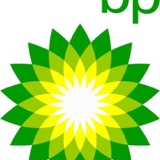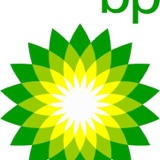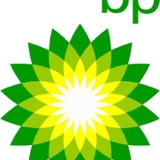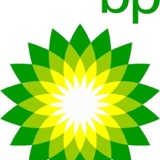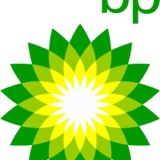Information
-
Document No.
-
Audit Title
-
Client / Site
-
Conducted on
-
Prepared by
-
Location
-
Personnel
Section 1: Leadership
-
1.1 Does the company have a policy statement reflecting management’s commitment to HSE, which is clearly disseminated through displayed policies, in manuals and training programmes, displayed statements and specific positions on the organisation chart?
-
1.2 Has an HSE co-ordinator been appointed who reports directly to senior management?
-
1.3 Is there a reference manual that communicates Management Policies and Practices?
-
1.4 Are annual HSE objectives established for the company?
-
1.5 Are personnel aware of HSE objectives?
-
1.6 Are HSE objectives being met?
-
1.7 Are there formal tours and inspections by management personnel?
-
1.8 Does the company have periodic major HSE audits or surveys?
-
1.9 Is there a structured follow-up system that establishes priorities for follow-up actions, identifies critical items to be corrected, establishes time frames for corrections, and assigns responsibility to ensure that corrective action is taken?<br>
-
1.10 Have recommendations from previous major audits or surveys been implemented?<br>
-
1.11 Does the company have a drugs and alcohol policy?<br>
-
1.12 Does the company operate a policy for safe use of electrical items whilst on company business? e.g. mobile phones and computers?<br>
Section 2: Manning and Training
-
2.1 Are there sufficient qualified personnel available at each treatment to operate in a safe and effective manner?<br>
-
2.2 Is there an organisational chart?<br>
-
2.3 Are there individual job descriptions available?<br>
-
2.4 Has a systematic approach been adopted to identify all employee training needs?<br>
-
2.5 Has training been established for all identified training needs?<br>
-
2.6 Are training needs formally reviewed and updated annually?<br>
-
2.7 Do contractors and employees undergo site-specific safety courses before working in refineries, terminals, or other inspection sites?<br>
-
2.8 Are training courses in house?<br>
-
2.9 Are external training courses used?<br>
Procedures and Documentation
-
3.1 Does the company hold Employer’s Liability insurance?<br>
-
3.3 Does the company have readily available operating manuals?<br>
-
3.4 Are operating manuals updated to reflect changes to inspection requirements from the original concept?<br>
-
3.5 Are relevant industry standards and codes, and individual client instructions periodically reviewed to ensure compliance?<br>
-
-
3.7 Are there written general health, safety and environmental rules translated into sufficient languages for all employees to understand?<br>
-
3.2 Does the company hold Professional Indemnity insurance?<br>
-
3.10 Are portable devices available to test for flammable gas, oxygen and hydrogen sulphide?<br>
-
3.9 Are formal risk assessments carried out for all inspection tasks conducted at the regional sites with Method Statements developed for complex jobs?<br>
-
3.8 Does the company ensure inspectors operate under a formal work permit system especially when operating at the ship/shore terminal or when engaged in Confined Space Entry?<br>
-
3.12 When using subcontractors for treatments, is Annex A of RADDS completed and retained?<br>
-
3.11 Are portable gas testing devices calibrated regularly and calibrated before use?<br>
-
3.13 Does the Company Hold MSDS for all additive products used?
Management of Change
-
4.1 Are systematic reviews used to identify hazards and assess risks associated with change – i.e. new and modified facilities and operating procedures?<br>
-
4.2 Has RADDS been incorporated?<br>
Accident/Incident Investigation
-
5.1 Is there an accident/incident/non-conformance investigation system?<br>
-
5.2 Does the investigation procedure require that injuries, occupational illnesses, non-conformances, property damage, environmental damage/complaints, security breaches and other accidents and incidents (near misses) be reported?<br>
-
5.3 Is there a designated safety officer/representative who has received formal training in accident/incident investigation and reporting?<br>
-
5.4 Is there a standard form for accident/incident investigation?<br>
-
-
5.6 Are safety statistics maintained for contractors?<br>
-
5.7 Is a system being used by appropriate personnel, which ensures that remedial actions, and follow-up of those actions, are carried out as recommended in the accident/incident (near-miss) investigation report?<br>
-
5.8 Is a blank form available for viewing?<br>
-
5.9 Is there an example of a completed form available?<br>
Communication
-
6.1 Is communication between the inspection company and clients (direct/indirect, contact personnel) effective and reliable?<br>
-
6.2 Are any group meetings held with employees to discuss current topics relating to health, safety and environmental control?<br>
-
6.3 Are these group meetings formalised and documented (i.e. agenda, minutes, etc.)?<br>
-
6.5 Is there a new employee general orientation/induction programme?<br>
-
6.4 Are there adequate bulletin boards around the company offices for HSE purposes?<br>
-
6.6 Does the induction cover: a) Hazard awareness and reporting, b) General rules and procedures, c) Organisational health, safety and environmental policy and local environmental sensitivities., d) Legislative requirements<br>
Other Comments or Information
-
Select date
-
Add signature






